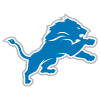The First Read: Winners and losers from Day 2 of the 2024 NFL Draft
- Winners and losers: Round 1
- Day 2
- 32 thoughts for 32 teams
The initial day of the NFL draft focuses on identifying star players, while the second day is centered on discovering players who can contribute to victories. Although less glamorous, the outcomes are crucial for teams pursuing playoff positions and titles. A mistake in the second and third rounds of the draft can lead to significant consequences in the future.
It’s also much harder to evaluate the selections on the second day than it is on the first, for obvious reasons. There’s not as much hype surrounding the players, and most don’t elicit huge cheers when their names are called. You have to think even more astutely about fits and opportunities, because those are what usually determine how successful these players become. They can become stars, but just as important is how their presence impacts the rest of the roster.
So, here’s The First Read breakdown of the winners and losers of Day 2 of the 2024 NFL Draft. Some are obvious, others are surprising but they all make sense in their own way …
WINNERS
1) Patrick Mahomes, QB, Kansas City Chiefs: The Chiefs have been searching for a permanent option to protect the blind side of their star quarterback for the last three years. They may have finally found their answer with the second-round selection of BYU left tackle Kingsley Suamataia (No. 63 overall). Not only does he have the requisite size (checking in at 6-foot-5 and 326 pounds), but Suamataia is so athletic that he recorded a faster 40-yard dash (5.04 seconds) and 10-yard split (1.74 seconds) at the NFL Scouting Combine than Detroit’s Penei Sewell (a top-10 pick in 2021 who has blossomed into an All-Pro for the Lions) did at his pro day. It’s apparent that Suamataia isn’t ready to step right in and thrive in the NFL as quickly as Sewell did. Suamataia became a starter at left tackle last year after spending the previous season on the right side. He also needs to refine his technique and display more consistency against speed rushers. However, the Chiefs have the option of bringing back Donovan Smith — who’s currently a free agent after playing in Kansas City on a one-year deal last season — and giving Suamataia time to develop. Mahomes has proven good enough to win championships with Smith and Orlando Brown Jr. playing left tackle. If the Chiefs can maximize the tremendous talent of Suamataia, they won’t have to worry any more about finding stopgaps at the position.
2) Jim Harbaugh, HC, Los Angeles Chargers: Harbaugh must appreciate the job his general manager, Joe Hortiz, has done so far. The Chargers landed Notre Dame left tackle Joe Alt with the fifth overall pick on Thursday night, a move that should stabilize their offensive line for years to come. They followed that effort with two more smart selections on Friday. The first was the decision to trade up to take Georgia wide receiver Ladd McConkey in the second round (No. 34 overall). McConkey is both a dynamic athlete and a savvy route runner, and he should blossom into a favorite target for quarterback Justin Herbert. The Chargers’ third-round pick was a player Harbaugh knows well from his last coaching stop: Michigan linebacker Junior Colson (No. 69 overall). Los Angeles lost starting linebackers Kenneth Murray and Eric Kendricks this offseason, creating an opportunity for Colson to step right into the middle of that defense. Colson is both durable (he started 36 games in three seasons at Michigan) and capable of being a difference-maker against the run or pass. There’s still plenty of work for the Chargers to do in terms of catching the Chiefs in the AFC West, but this is a good start for a new regime. Harbaugh is finding exactly the kind of players he needs to make his system work.
3) Aaron Glenn, DC, Detroit Lions: Glenn needed help at cornerback, and now he’s got it. Detroit GM Brad Holmes moved up to draft Alabama cornerback Terrion Arnold in the first round (No. 24 overall), then picked Missouri cornerback Ennis Rakestraw Jr. in the second round (No. 61 overall). These are exactly the types of young defensive backs the Lions needed to add to a secondary that looks far better on paper today than it did before. Prior to the draft, Holmes re-signed Emmanuel Moseley, traded for Carlton Davis III and signed Amik Robertson. Now he’s bringing in a couple tough cornerbacks with strong coverage and ball skills to stabilize what was one of the league’s worst pass defenses last season. There were a lot of people thinking the Lions should’ve traded for Chiefs cornerback L’Jarius Sneed when he was available earlier this offseason. Holmes apparently had a different plan of attack, and Glenn’s job just became much easier as a result.
4) Adam Peters, GM, Washington Commanders: Peters’ first year on the job is off to a strong start. He found his franchise quarterback with the second overall pick (LSU’s Jayden Daniels) and then spent Day 2 of the draft acquiring players who should provide immediate help for this team. Illinois defensive tackle Jer’Zhan Newton (No. 36 overall) is a game-wrecker who can disrupt blocking schemes in the same manner as current Commanders stars Daron Payne and Jonathan Allen. It might be hard to figure out exactly how Newton rotates with Payne and Allen, but that’s a good problem for head coach Dan Quinn to address. Peters also found an ideal nickel corner for Quinn in Michigan’s Mike Sainristil with Washington’s second pick in the second round (No. 50 overall). Sainristil is exactly the kind of feisty leader who can thrive against slot receivers; notably, he returned two of his six interceptions last season for touchdowns. Peters rounded out his second round by grabbing Kansas State tight end Ben Sinnott (No. 53 overall). The Commanders don’t have much else at that position after Zach Ertz, and Sinnott can comfortably line up anywhere on offense. Finally, in Round 3, Peters added two more potential pieces to boost Daniels’ prospects on offense: TCU tackle Brandon Coleman (No. 67 overall) and Rice receiver (and brother of Christian McCaffrey) Luke McCaffrey (No. 100 overall).
5) Michael Pittman Jr., WR, Indianapolis Colts: It’s hard to think of a wide receiver who’s done more with less help around him than Pittman has in the last three years. He had 109 receptions last season alone; the next closest person in that category on the Colts’ roster was Josh Downs, with 68. That dynamic has worked out well for Pittman’s finances; he signed a three-year extension last month. But he could still stand to deal with a little less pressure every week. That’s why it was nice to see Colts GM Chris Ballard select Texas wide receiver Adonai Mitchell in the second round. Mitchell brings the speed and explosiveness that the Colts’ offense has needed for quite some time. He doesn’t have to be an immediate star, either. His most important quality will be taking the top off opposing defenses and creating more space for players like Pittman to operate. Pittman might not generate the same numbers he has in the past, but his overall impact on this offense should be much greater.
LOSERS
1) Tee Higgins, WR, Cincinnati Bengals: Higgins might have thrown cold water on his trade request with his admission earlier this month that he expects to stay in Cincinnati in 2024, but his chances of being moved seem even less viable now that we’re heading toward the final day of the draft. There was some speculative chatter in the media about the possibility of Buffalo making an offer — after the Bills traded out of the first round without taking a wide receiver, despite the need to replace Stefon Diggs — but that hypothetical scenario disappeared once Buffalo selected Florida State wide receiver Keon Coleman in the second round (No. 33 overall). Higgins is obviously in a tough spot, since he’s carrying the franchise tag, and there apparently hasn’t been much movement toward a new deal. He’s also not the only player on the Bengals roster who seems to be upset about his contract situation, as defensive end Trey Hendrickson demanded a trade right before the draft as well. The team hasn’t shown any indication that it wants to deal either player, by the way. The decision to draft Alabama wide receiver Jermaine Burton in the third round (No. 80 overall) also suggests that the Bengals are preparing for life after Higgins following this season.
2) Cooper DeJean, CB, Philadelphia Eagles: DeJean landed in a great spot as the second-round pick of the Philadelphia Eagles (No. 40 overall) — but he surely had to be disappointed by how long it took to find a home. This is a player who has first-round ability, even after his final season at Iowa ended with a broken fibula. The problem is, the first round of this draft wasn’t especially kind to defensive players, and certainly not to defensive backs. There wasn’t a single defensive player taken in the first 14 selections, and no cornerbacks came off the board until the Eagles selected Toledo’s Quinyon Mitchell with the 22nd overall pick. Two more cornerbacks went in the first round — Arnold to Detroit and Nate Wiggins to Baltimore at No. 30 — and that left DeJean as the odd man out. The upside is that he’s going to an Eagles team that is committed to improving a weak defense, and new coordinator Vic Fangio will have a great plan for him. DeJean has the versatility to play corner, safety and in the slot. He may prove to be one of the best steals of this draft.
3) AJ Dillon, RB, Green Bay Packers: The Green Bay Packers running back might not be crazy about his role this fall. The team clearly plans on making the most of Josh Jacobs after signing him in free agency. Now it’s fair to wonder how Green Bay’s decision to draft USC running back MarShawn Lloyd in the third round (No. 88 overall) impacts Dillon. Lloyd possesses many of the same skills as Jacobs — patience and elusiveness as a runner combined with strong pass-catching abilities — and Dillon is going to be a free agent after this season. The Packers were ruthless enough to replace Aaron Jones with Jacobs when given the chance back in March. It’s not hard to see Lloyd becoming a bigger part of this offense, even with Dillon being the more experienced player.
4) Tight ends: It’s been a rough draft for this position, as only three have been selected through the first three rounds: Sinnott, Tip Reiman (third round to Arizona, No. 82 overall) and Brock Bowers (first round to Las Vegas). It also was a bit surprising that Texas tight end Ja’Tavion Sanders wasn’t included in that group. He’s the most athletic tight end in this class after Bowers, and he has the ability to impact the game as a dynamic pass-catcher. He’ll likely be a Day 3 selection, but that proves how limited this position was in this class.



